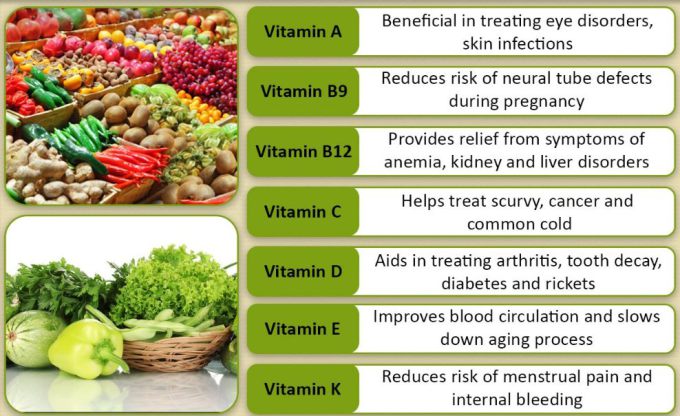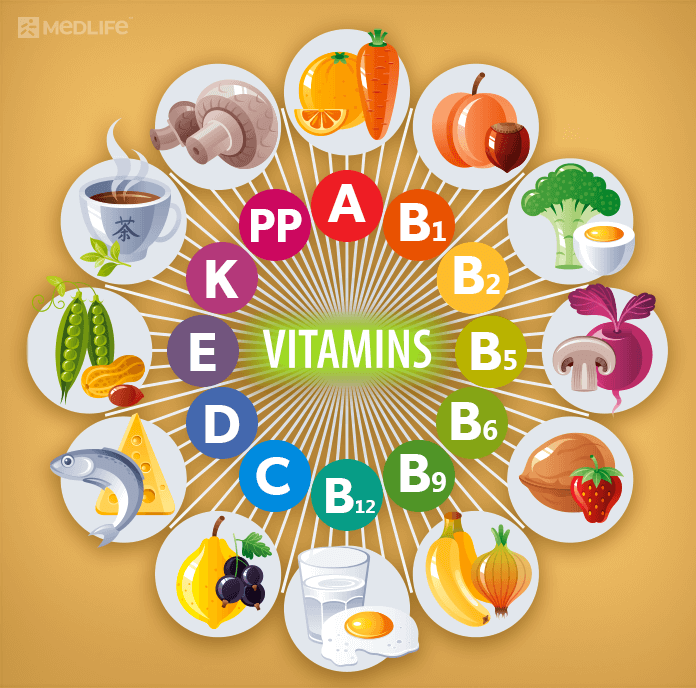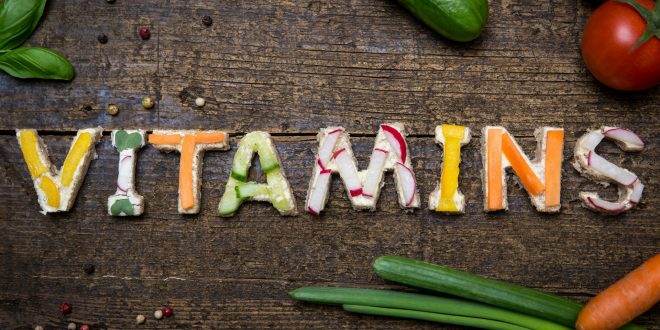Vitamins and minerals are essential nutrients because they perform many roles within the body. There is a fine line between getting enough of those nutrients (which is healthy) and getting an excessive amount of (which can find yourself harming us). Eating a healthy diet remains the best way to get sufficient amounts of the vitamins and minerals we need.
Best safe and secure cloud storage with password protection
Get Envato Elements, Prime Video, Hotstar and Netflix For Free
Best Money Earning Website 100$ Day
#1 Top ranking article submission website

A vitamin is an organic molecule (or a gaggle of molecules closely related chemically, vitamers) that’s a crucial micronutrient which an organism needs in small quantities for the proper functioning of its metabolism. Vitamins are organic compounds that are needed in small quantities to sustain life. Essential nutrients can’t be synthesized within the organism, either within the least or not in sufficient quantities, and thus must be obtained through the diet. Most vitamins got to come from food. this is often because the physical body either doesn’t produce enough of them, or it doesn’t produce any in the least . this is often because the physical body either doesn’t produce enough of them, or it doesn’t produce any in the least . Vitamins are substances that your body must grow and develop normally. There are 13 vitamins your body needs.
They are
- Vitamin A
- B vitamins (thiamine, riboflavin, niacin, pantothenic acid, biotin, vitamin B-6, vitamin B-12 and folate)
- Vitamin C
- Vitamin D
- Vitamin E
- Vitamin K
Each organism has different vitamin requirements. For example, humans got to consume vitamin C , or vitamin C , but dogs don’t . Dogs can produce, or synthesize, enough vitamin C for his or her own needs, but humans cannot. Different vitamins have different roles, and that they are needed in several quantities.

Each vitamin has specific jobs. If we’ve low levels of certain vitamins, we may get health problems. For example, if we don’t get enough vitamin C , we could become anemic. Some vitamins may help prevent medical problems. Vitamin A prevents night blindness .
The best thanks to get enough vitamins is to eat a diet with a spread of foods. In some cases, we may need to take vitamin supplements. It’s a good idea to ask our health care provider first. High doses of some vitamins can cause serious problems. The list of vitamins below can give us an understanding of how particular different types of vitamins work in our body, how much of each nutrient you need every day , and what sorts of food to eat to make sure that you simply are becoming an adequate supply.
| VITAMIN | BENEFITS | GOOD FOOD SOURCES | EXTRA INFO. |
| RETINOIDS AND
CAROTENE (vitamin A) |
Essential for vision Lycopene may lower prostate cancer risk. Keeps tissues and skin healthy. Plays an important role in bone growth and in the immune system. Diets rich in the carotenoids alpha carotene and lycopene seem to lower lung cancer risk. Carotenoids act as antioxidants. Foods rich in the carotenoids lutein and zeaxanthin may protect against cataracts. | Beef liver, eggs, shrimp, fish, fortified milk, butter, cheddar cheese, Swiss cheese. | Many people get too much preformed vitamin A from food and supplements. Large amounts of supplemental vitamin A (but not beta carotene) can be harmful to bones. |
| THIAMIN (vitamin B1) | Helps convert food into energy. Needed for healthy skin, hair, muscles, and brain and is critical for nerve function. | brown rice, ham, soymilk, watermelons, acorn squash | Most nutritious foods have some thiamin. |
| RIBOFLAVIN (vitamin B2) | Helps convert food into energy. Needed for healthy skin, hair, blood, and brain. | Milk, eggs, yogurt, cheese, meats, green leafy vegetables, whole and enriched grains and cereals. | Most of the people get enough of this nutrient. |
| NIACIN (vitamin B3, nicotinic acid) | Helps convert food into energy. Essential for healthy skin, blood cells, brain, and nervous system | Meat, poultry, fish, fortified and whole grains, mushrooms, potatoes, peanut butter. | Niacin occurs naturally in food and can also be made by your body from the amino acid tryptophan, with the help of B6. |
| PANTOTHENIC ACID (vitamin B5) | Helps convert food into energy. Helps make lipids (fats), neurotransmitters, steroid hormones, and hemoglobin | Wide variety of nutritious foods, including chicken, egg yolk, whole grains, broccoli, mushrooms, avocados, tomato products | Deficiency causes burning feet and other neurologic symptoms. |
| PYRIDOXINE (vitamin B6, pyridoxal, pyridoxine, pyridoxamine) | Aids in lowering homocysteine levels and may reduce the risk of heart disease. Helps convert tryptophan to niacin and serotonin, a neurotransmitter that plays key roles in sleep, appetite, and moods. Helps make red blood cells Influences cognitive abilities and immune function | Meat, fish, poultry, legumes, tofu and other soy products, potatoes, noncitric fruits such as bananas and watermelons | Many people don’t get enough of this nutrient |
| COBALAMIN (vitamin B12) | Aids in lowering homocysteine levels and may lower the risk of heart disease. Assists in making new cells and breaking down some fatty acids and amino acids. Protects nerve cells and encourages their normal growth Helps make red blood cells and DNA | Meat, poultry, fish, milk, cheese, eggs, fortified cereals, fortified soymilk | Some people, particularly older adults, are deficient in vitamin B12 because they have trouble absorbing this vitamin from food. Those on a vegan or vegetarian diet often don’t get enough B12 as it’s mostly found in animal products. They may need to take supplements. A lack of vitamin B12 can cause memory loss, dementia, and numbness in the arms and legs. |
| ASCORBIC ACID (vitamin C) | Foods rich in vitamin C may lower the risk for some cancers, including those of the mouth, esophagus, stomach, and breast. Long-term use of supplemental vitamin C may protect against cataracts. Helps make collagen, a connective tissue that knits together wounds and supports blood vessel walls. Helps make the neurotransmitters serotonin and norepinephrine Acts as an antioxidant, neutralizing unstable molecules that can damage cells. Bolsters the immune system | Fruits and fruit juices (especially citrus), potatoes, broccoli, bell peppers, spinach, strawberries, tomatoes, Brussels sprouts | Evidence that vitamin C helps reduce colds has not been convincing. |
| CALCIFEROL (vitamin D) | Helps maintain normal blood levels of calcium and phosphorus, which strengthen bones. Helps form teeth and bones. Supplements can reduce the number of non-spinal fractures | Fortified milk or margarine, fortified cereals, fatty fish | Many people don’t get enough of this nutrient. While the body uses sunlight to make vitamin D, it cannot make enough if you live in northern climates or don’t spend much time in the sun. |
| ALPHA-TOCOPHEROL (vitamin E) | Acts as an antioxidant, neutralizing unstable molecules that can damage cells. Protects vitamin A and certain lipids from damage. Diets rich in vitamin E may help prevent Alzheimer’s disease. | Wide variety of foods, including vegetable oils, salad dressings and margarines made with vegetable oils, wheat germ, leafy green vegetables, whole grains, nuts | Vitamin E does not prevent wrinkles or slow other aging processes. |
| FOLIC ACID (vitamin B9, folate, folacin) | Vital for new cell creation helps prevent brain and spine birth defects when taken early in pregnancy; should be taken regularly by all women of child-bearing age since women may not know they are pregnant in the first weeks of pregnancy. Can lower levels of homocysteine and may reduce heart disease risk May reduce risk for colon cancer. Offsets breast cancer risk among women who consume alcohol | Fortified grains and cereals, asparagus, okra, spinach, turnip greens, broccoli, legumes like black-eyed peas and chickpeas, orange juice, tomato juice | Many people don’t get enough of this nutrient. Occasionally, folic acid masks a B12 deficiency, which can lead to severe neurological complications. That’s not a reason to avoid folic acid; just be sure to get enough B12. |
| PHYLLOQUINONE, MENADIONE (vitamin K) | Activates proteins and calcium essential to blood clotting. May help prevent hip fractures | Cabbage, liver, eggs, milk, spinach, broccoli, sprouts, kale, collards, and other green vegetables | Intestinal bacteria make a form of vitamin K that accounts for half your requirements. If you take an anticoagulant, keep your vitamin K intake consistent. |
Vitamins which are organic compounds are needed in small quantities to sustain life. Most vitamins are need to come from foods. This is because the physical body either doesn’t produce enough of them, or it doesn’t produce any in the least . Each organism has different vitamin requirements. For example, humans got to consume vitamin C , or vitamin C , but dogs don’t . Dogs can produce, or synthesize, enough vitamin C for his or her own needs, but humans cannot.
People got to get most of their vitamin D from exposure to sunlight, because it’s not available in large enough quantities in food. However, the physical body can synthesize it when exposed to sunlight. Different vitamins have different roles, and that they are needed in several quantities.
The best thanks to get enough vitamins is to eat a diet with a spread of foods. In some cases, you’ll got to take vitamin supplements. It’s an honest idea to ask your health care provider first. High doses of some vitamins can cause problems.
Reference
Informations and pictures have been added by Author and from Wikipedia.
Reference used for info: Principles of Biochemistry by Albert L. Lehninger, David L. Nelson and Michael M. Cox.
 Plantlet The Blogging Platform of Department of Botany, University of Dhaka
Plantlet The Blogging Platform of Department of Botany, University of Dhaka






medroxyprogestrone 10 mg is employed to treat amenorrhea and abnormal uterine dying. It is likewise used to forestall endometrial hyperplasia in ladies who are carrying formed estrogens. This medicine is a progestin chemical.